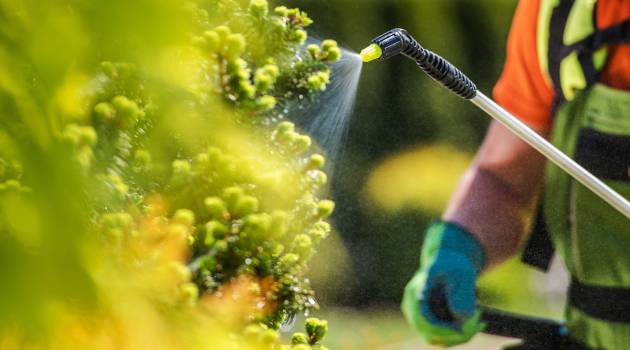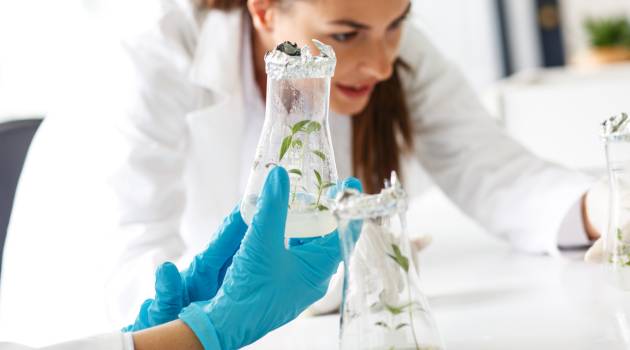As the demand for food continues to increase rapidly, the use of chemical fertilizers has become rampant. While chemical fertilizers are known to increase crop yields, their devastating effects on the environment and soil health cannot be ignored. This is where biofertilizers come in.
What is the purpose of biofertilizers?
Biofertilizers are eco-friendly alternatives to chemical fertilizers that are derived from natural sources such as plant and animal waste, microorganisms, and minerals. Biofertilizers play an essential role in sustainable agriculture by promoting soil fertility, improving crop quality, and reducing environmental pollution.
Advantages of using biofertilizers in agriculture
Biofertilizers offer many benefits to farmers and the environment. These eco-friendly inputs can improve soil health, increase crop yields, and reduce the use of chemical fertilizers, which can have harmful effects on ecosystems and human health.
Improving soil health
Biofertilizers include beneficial microorganisms that help to improve soil health. Nitrogen-fixing biofertilizers can increase the availability of nitrogen in the soil, which is essential for plant growth. Phosphate-solubilizing biofertilizers can break down insoluble phosphates in the soil, which can make it easier for plants to absorb these nutrients. Plant growth-promoting rhizobacteria can help to combat plant diseases and enhance stress tolerance, which can improve crop health and yield.
Increasing crop yields
Biofertilizers can help to increase crop yields by providing essential nutrients to plants. When used in combination with other sustainable agriculture practices, such as crop rotation and integrated pest management, biofertilizers can help to improve soil health and reduce the use of chemical inputs, which can result in healthier crops and higher yields.
Reducing environmental pollution
Chemical fertilizers can have harmful effects on ecosystems and human health. When these inputs are overused, excess nutrients can leach into waterways, which can lead to eutrophication and the formation of dead zones in the water. Biofertilizers, on the other hand, are eco-friendly and can help to reduce environmental pollution by providing nutrients to plants sustainably.
Promoting sustainable agriculture practices
Biofertilizers are an important tool in sustainable agriculture practices. By improving soil health and reducing the use of chemical inputs, biofertilizers can help to promote eco-friendly farming practices that are better for the environment, human and animal health.
Classification of Biofertilizers
Different types of Biofertilizers include different organic matters that operate through various mechanisms, each serving a unique purpose. These beneficial microorganisms present in biofertilizers work synergistically to create a harmonious ecosystem within the soil while aligning with organic farming practices, making them an eco-friendly choice for farmers.
1. Nitrogen-fixing Biofertilizers
Nitrogen is one of the basic elements required by plants to grow. However, most of the nitrogen in the soil is not in a form that plants can use. This is where nitrogen-fixing biofertilizers come in. These bio fertilizers contain bacteria that help in fixing atmospheric nitrogen in the soil, making it available to plants.
Nitrogen-fixing biofertilizers also have importance in Sustainable Agriculture, such as reducing greenhouse gas emissions. When farmers use chemical fertilizers, excess nitrogen can be released into the atmosphere as nitrous oxide, which is a potent greenhouse gas. The use of nitrogen-fixing biofertilizers can help to reduce these emissions and promote eco-friendly agriculture.
How Nitrogen-fixing Biofertilizers Work ?
The bacteria present in nitrogen-fixing biofertilizers convert atmospheric nitrogen into ammonium, which plants can use. This process is called nitrogen fixation. The plants, in turn, provide the bacteria with carbohydrates, which they need for their growth and survival. This symbiotic relationship between plants and bacteria helps to improve soil health and increase crop yields.
2. Phosphate-solubilizing biofertilizers
Phosphate-solubilizing biofertilizers play a crucial role in eco-friendly agriculture. They also reduce the reliance on chemical fertilizers, which can negatively impact soil quality and the environment. Phosphate-solubilizing biofertilizers improve soil health and structure, which can lead to better water retention and reduced soil erosion. In addition, these biofertilizers are cost-effective and can be easily incorporated into existing agricultural practices.
How do phosphate-solubilizing biofertilizers work?
Phosphate-solubilizing biofertilizers contain microorganisms that can convert the phosphorus present in soil into a form that is easily absorbed by plant roots. This conversion process is known as solubilization. The microorganisms present in these bio fertilizers release organic acids and enzymes that help to break down insoluble phosphates into soluble forms. This process increases the availability of phosphorus to crops, which in turn improves crop yield.
3. Plant growth-promoting rhizobacteria
Plant growth-promoting rhizobacteria (pgpr) are beneficial microorganisms that live in the soil and form symbiotic relationships with plant roots. These biofertilizers have been shown to be effective in improving plant nutrient uptake, combating plant diseases, and enhancing stress tolerance.
One key way that it works is by producing growth-promoting substances that enhance nutrient availability in the soil. For example, some bacteria can produce organic acids that break down minerals, making them more accessible to plant roots. Other bacteria can produce enzymes that break down complex molecules, such as proteins and starches, into simpler compounds that are easier for plants to absorb.
Plant growth-promoting rhizobacteria can also help plants resist stress caused by environmental factors such as drought, extreme temperatures, and physical damage. By producing stress-resistant compounds and enzymes, these bacteria can help plants survive and thrive in challenging conditions.
Overall, the use of plant growth-promoting rhizobacteria is an important aspect of sustainable agriculture. By improving nutrient uptake, reducing plant stress, and promoting healthy plant growth, these biofertilizers can help farmers increase crop yields while reducing their reliance on chemical fertilizers and pesticides.
4. Mycorrhizal fungi biofertilizer
There are two main types of mycorrhizal fungi: arbuscular mycorrhiza and ectomycorrhiza. Arbuscular mycorrhiza forms a mutualistic relationship with the majority of plant species, while ectomycorrhizal forms symbiotic associations with only a limited number of plant species, mostly trees, and shrubs.
How do mycorrhizal fungi work ?
Mycorrhizal fungi form a symbiotic relationship with plant roots. The fungi attach themselves to the root system, extending the surface area available for nutrient uptake. This relationship improves nutrient uptake, enhances soil structure, and improves water uptake by plants. The increased nutrient availability enables plants to grow better, leading to increased crop yields.

How to use biofertilizers in agriculture?
The application of biofertilizers in agriculture requires certain best practices to ensure maximum benefits are obtained. Firstly, biofertilizers should be stored in a cool and dry place to maintain their effectiveness. Additionally, it is advisable to avoid exposing biofertilizers to direct sunlight, as this can reduce their viability.
When applying biofertilizers, they should be mixed with other inputs, such as compost or manure, to enhance their effectiveness. The mixture should then be thoroughly mixed with the soil in the planting area. It is also important to avoid using chemical fertilizers alongside biofertilizers, as this can reduce their effectiveness.
Using Nitrogen-fixing Biofertilizers
Nitrogen-fixing biofertilizers should be applied during planting or at the early stages of plant growth to increase nutrient availability. It is also important to ensure that the soil is moist before applying the biofertilizer.
Using Phosphate-solubilizing Biofertilizers
Phosphate-solubilizing biofertilizers should be applied at the beginning of the growing season to enable the breakdown of insoluble phosphates. It is also important to avoid using phosphate-solubilizing biofertilizers alongside chemical fertilizers, as this can reduce their effectiveness.
Using Plant growth-promoting Rhizobacteria
Plant growth-promoting rhizobacteria should be applied during planting or early growth stages to enable the establishment of the symbiotic relationship with plant roots. It is also important to avoid using chemical pesticides, as this can reduce the effectiveness of the biofertilizers.
Using Mycorrhizal Fungi
Mycorrhizal fungi should be applied during planting or early growth stages to establish a symbiotic relationship with plant roots. It is also important to ensure that the soil is moist before applying the biofertilizer.
By following the best practices outlined above, farmers can maximize the benefits of using biofertilizers while promoting sustainable agriculture practices.
Conclusion
To sum up, biofertilizers play a crucial role in promoting sustainable agriculture practices. Unlike chemical fertilizers, biofertilizers are eco-friendly and do not harm the environment. Using biofertilizers in agriculture has many benefits, including increased crop yields, improved soil health, reduced environmental pollution, and the promotion of sustainable agriculture practices. Farmers and stakeholders can adopt eco-friendly agriculture practices by using biofertilizers in combination with other sustainable agriculture practices such as crop rotation and integrated pest management.
In conclusion, the use of biofertilizers is a step towards sustainable agriculture practices and a better future for our planet. Let’s embrace the use of biofertilizers and promote eco-friendly agriculture practices.






